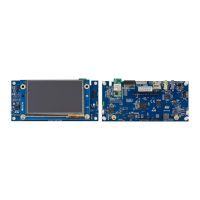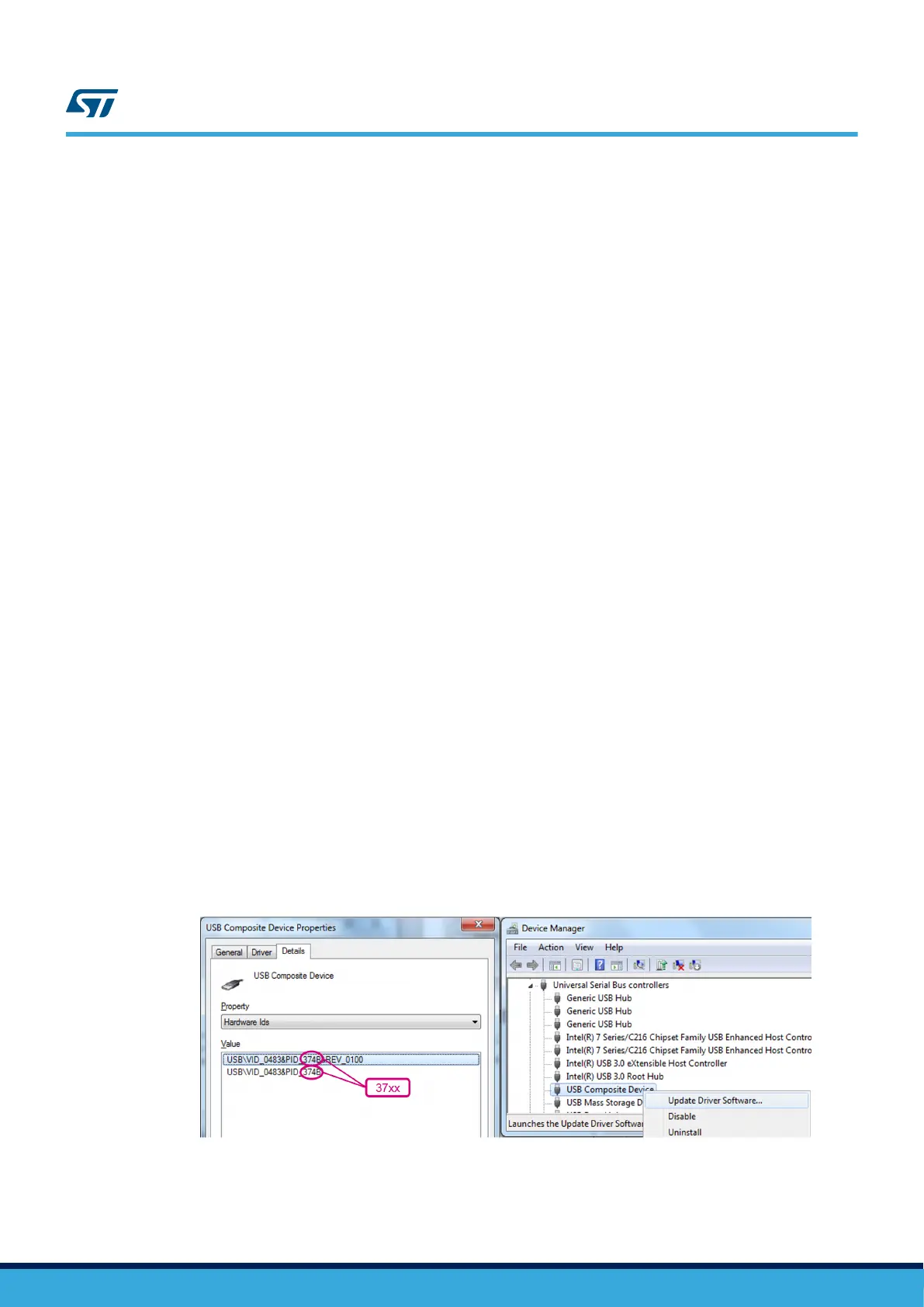8.1 Embedded STLINK-V3E
8.1.1 Description
There are two different ways to program or debug the onboard STM32 MCU:
• Using the embedded STLINK-V3E
• Using an external debug tool connected to CN8 MIPI-10 connector
The facility for programming and debugging the STM32H7B3LIH6QU is integrated into the STM32H7B3I-DK
board.
The STLINK-V3E makes the STM32H7B3I-DK board Mbed Enabled™.
The embedded STLINK-V3E supports only SWD and VCP for STM32 devices. For information about debugging
and programming features, refer to the technical note Overview of ST-LINK derivatives TN1235, which describes
in detail all the STLINK-V3E features.
Features supported on STLINK-V3E:
• 5V power supplied by USB connector (CN14)
• USB 2.0 high-speed-compatible interface
• JTAG/serial wire debugging (SWD) specific features:
– 3 to 3.6V application voltage on the JTAG/SWD interface and 5V tolerant inputs
– JTAG
– SWD and serial viewer (SWV) communication
• Direct firmware update feature (DFU) (CN17)
• STDC14 (MIPI10) compatible connector (CN8)
• Status COM LED (LD4) which blinks during communication with the PC
• Fault red LED (LD7) alerting on USB overcurrent request
• 5V/500mA output power supply capability (U24) with current limitation and LED
• Green LED ON: 5V enabled (LD5)
8.1.2 Drivers
Before connecting the STM32H7B3I-DK board to a Windows PC via USB, the user must install a driver for the
STLINK-V3E (not required for Windows 10). It is available on the www.st.com website.
In case the STM32H7B3I-DK board is connected to the PC before the driver is installed, some STM32H7B3I-DK
interfaces may be declared as Unknown in the PC device manager. In this case, the user must manually install
the dedicated driver files, and update the driver of the connected device from the device manager as shown in
Figure 8.
Note: Prefer using the USB Composite Device handle for a full recovery.
Figure 8. USB composite device
UM2569
Embedded STLINK-V3E
UM2569 - Rev 1
page 12/54

